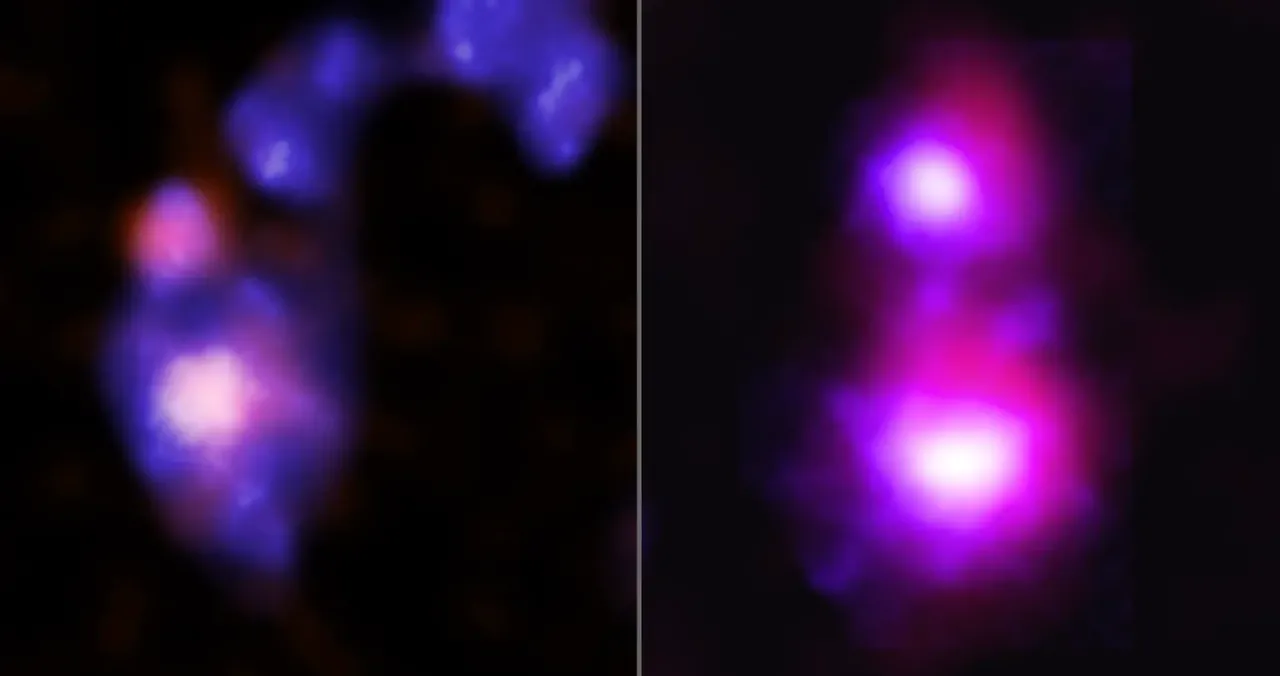NASA’s Chandra X-ray space telescope tracks colliding galaxies, black holes
Scientists have used the Chandra X-ray telescope managed in Alabama to find the first two observable candidates for merging dwarf galaxies that form larger galaxies, fuel black holes and have key roles in space galaxies.
Chandra is one of NASA’s Great Observatories and managed by the Marshall Space Flight Center in Huntsville, Ala. It is operated by the Harvard-Smithsonian Center for Astrophysics in Cambridge, Mass.
The two galaxies are on a collision course, researchers said in late February in The Astrophysical Journal. They say both galaxies show “tails and bridges” that characterize galaxy mergers. Both galaxies also have central black holes, “luminous X-ray sources” and other signs of the processes that “govern the earliest phases of growth of galaxies,” scientists say.
Dwarf galaxies are actually the most common type of galaxies, the researchers said. That helps make their mergers “potentially the most interesting type” that can help test theories and other observations. “However, these systems are very faint and impossible to observe directly at large redshifts,” the scientists said, which means the findings “can provide us a glimpse into processes that commonly happened in the early universe but remained elusive.”
The scientists named one of the galaxies Mirabilis after an “endangered species of hummingbirds known for their exceptionally large tails.” The second candidate is “associated with two dwarf galaxies in an early-stage merger,” and they were named Elstir and Vinteuil after fictional artists from Marcel Proust’s “In Search of Lost Time.”
Scientists have increasingly focused on “dwarf-dwarf galaxy mergers” and their effects on galaxy evolution, the scientists said. Hidden until now, these processes are believed to “be very common” in the early formation of galaxies and black holes.
“This paper introduces a novel approach of using archival X-ray and infrared observations, coupled with image processing to reveal (dual active galactic nuclei) in faint merging galaxies,” the scientists said, “and even if our targets turn out not to be dwarfs, the approach described in this paper can be used to discover rich populations of (dual active galactic nuclei).”
The Chandra telescope was launched in 1999 by Space Shuttle Columbia. Chandra Project Scientist Dr. Martin Weisskopf and his team oversee the scientific and technical aspects of the telescope.
